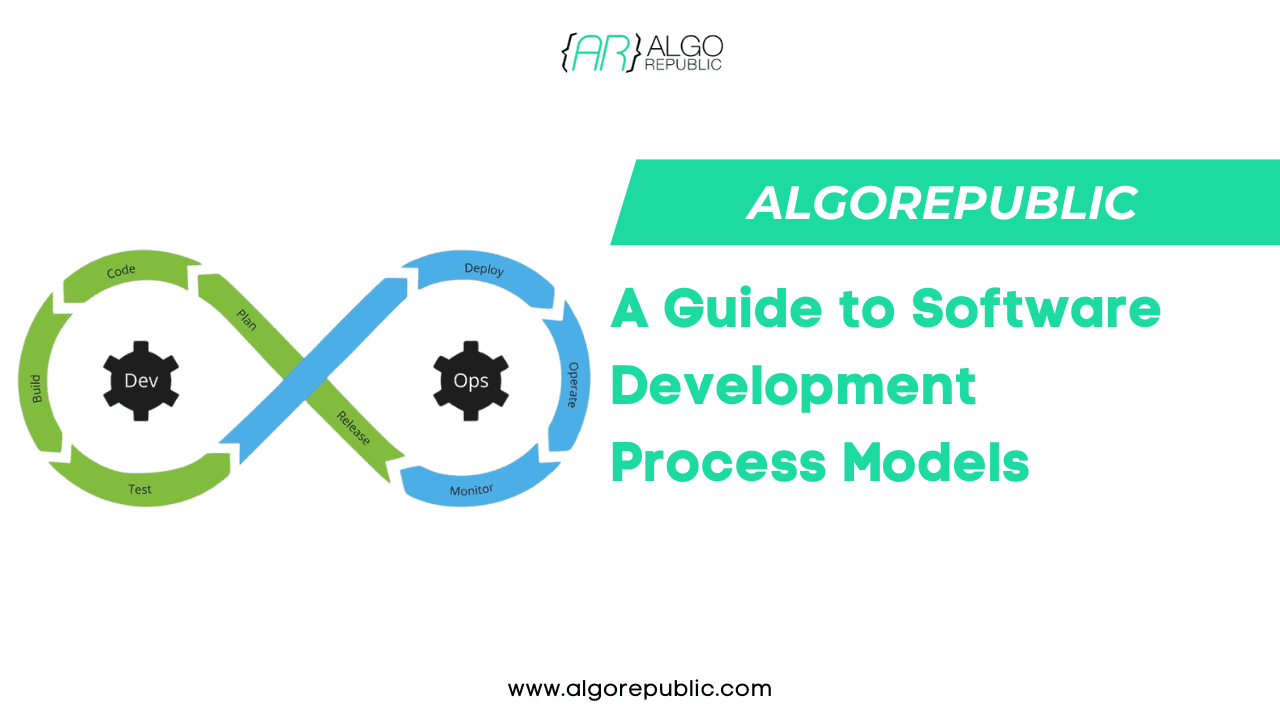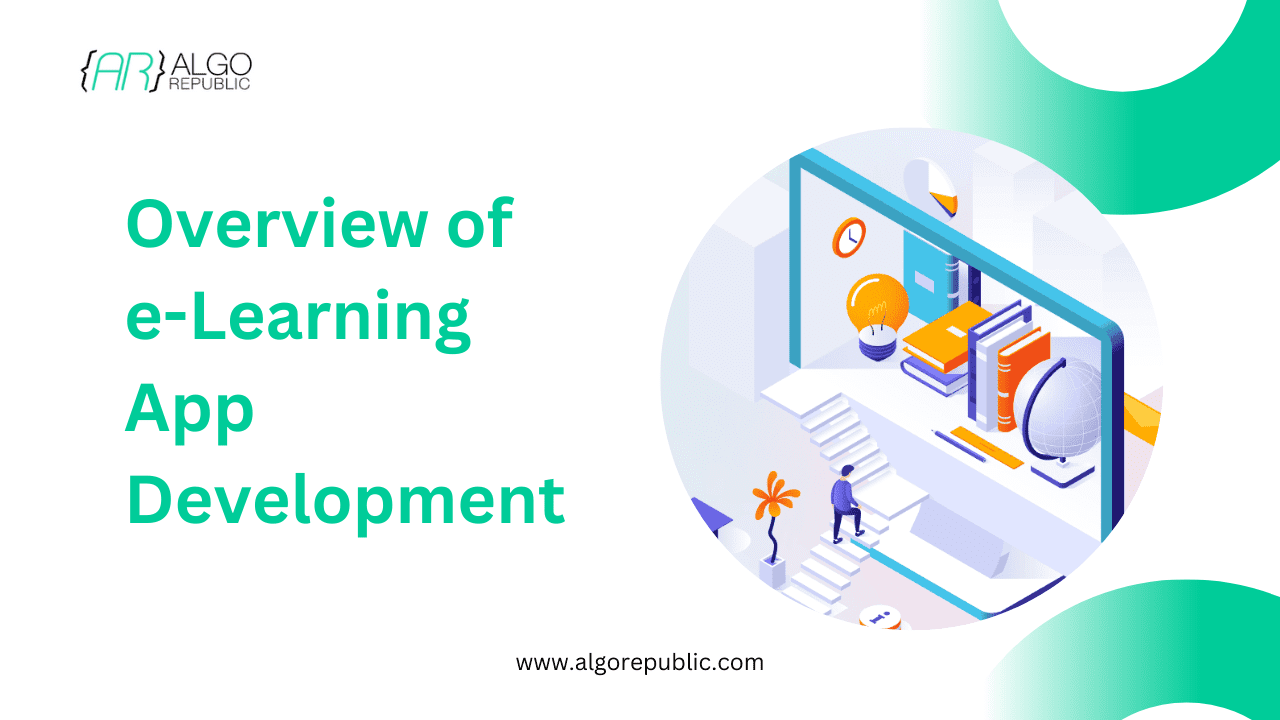Table of Contents
A structured approach is crucial in managing software development to achieve efficiency, quality, and successful project delivery. Software process models are vital in this aspect.
This blog will elaborate on the concept of software processes, delve into what they are, and explore seven popular types of these models. So let’s get started.
Understanding the Software Development Processes
The term “software process” refers to a set of activities, approaches, and protocols that are used to develop, maintain and manage software systems over their entire lifespan. This includes several phases such as gathering requirements, design, implementation, testing, deployment and maintenance.
A well-defined software process guarantees consistency in results while ensuring predictability and high standard outcomes throughout different stages of development projects.
Concept behind Software Process Model
A software process model outlines the arrangement, order and communication of tasks involved in creating a software development project. It offers methodologies to arrange and control projects while adjusting them to meet specific requirements, objectives or limitations
Top 7 Software Process Models
The Waterfall Model
The approach of the Waterfall model towards software development is sequential and linear. It involves completing each phase (requirements, design, implementation, testing deployment maintenance) in a sequence. This methodology focuses on careful upfront planning and documentation making it ideal for projects with stable technologies and clearly defined requirements.
The Prototyping Model
The Prototyping model consists of creating a basic version of the software, called a prototype. This method facilitates quick repetition and early assessment of design concepts by involving users to refine requirements before undertaking extensive development. It is particularly effective for projects that have unclear and random requirements.
The Incremental Model
The development process is broken down into modules or smaller increments with the Incremental model. Each module delivers a portion of functionality, allowing for iterative development and incremental delivery. At every stage, feedback can be gathered to enable early value delivery and flexibility in accommodating changing requirements.
The Spiral Model
The Spiral model is a blend of the Waterfall and Prototyping models, with particular focus on risk management via iterative stages of planning, analysis, development and assessment. Its strength lies in identifying high-risk factors at an early stage while allowing for flexibility to accommodate changing requirements or uncertainty present in complex projects.
The model used is Iterative
The Iterative approach includes a recurring sequence of development phases, with each cycle introducing additional functionality or upgrades to the software. It enables ongoing refinement through stakeholder input and gradual deployment, enabling versatility and adjustment as evolving needs arise during the course of development.
The RAD (Rapid Application Development) Model
The RAD approach prioritizes rapid development of prototypes and iterative advancement to expedite software application delivery. It highlights active user contribution, collaborative building, as well as the utilization of recyclable units to speed up development timelines for meeting tight deadlines.
The Agile Model
The Agile methodology enables flexibility, collaboration, and customer feedback in software development through iterative and incremental processes. It focuses on delivering functioning software in brief sprints while accommodating changes to requirements during the developmental stages. The adaptive planning of agile practices like Scrum, Kanban, and Extreme Programming (XP) enables continuous improvement via close teamwork between cross-functional teams.
Benefits of Using Software Process Models
There are several key benefits to adopting software process models that can greatly improve the efficiency, quality and success rates of software development projects.
- Improved Project Management
When there is a well-defined software process model in place, it offers a precise pathway for executing the project. This methodology enhances effective planning, scheduling and resource allocation which reduces uncertainties and boosts predictability leading to smooth progression of the said project.
- Enhanced Quality
The integration of optimal practices and standardized protocols into process models results in superior end-results. By implementing a methodical strategy, development teams can consistently surpass quality standards while minimizing the likelihood of defects or complications arising within the final product.
- Increased Efficiency
The use of software process models enhances workflow efficiency by outlining precise steps and delineating responsibilities. This eliminates any duplication or inefficiencies, enabling teams to operate with greater effectiveness. Additionally, automated tools and frameworks frequently supplement these models for even more substantial productivity gains.
- Better Risk Management
The application of process models allows for the timely detection and reduction of risks. Models, such as the Spiral Model, place emphasis on ongoing risk evaluation, empowering teams to manage potential issues before they become severe and ultimately reducing their impact on project outcomes.
- Enhanced Collaboration and Communication
Improved collaboration among team members and stakeholders is facilitated by the use of a standardized process model. This promotes a shared vocabulary and comprehension of the project, which facilitates communication and guarantees that all parties are in agreement with regards to both objectives and approaches.
- Scalability and Flexibility
The Agile and Incremental process models offer flexibility and adjustability, granting teams the ability to address shifting demands while maintaining high standards of quality and meeting deadlines. This allows for scalable operations without sacrificing performance or delivery timelines.
- Documentation and Accountability
Adherence to a process model guarantees thorough documentation of each stage in the development cycle. The significance of such records lies in establishing accountability, fulfilling compliance requirements and facilitating future references. Additionally, it facilitates effective knowledge transfer while training new team members.
- Customer Satisfaction
Following a well-defined process enables development teams to produce products that meet or surpass customer expectations. Methodologies such as Agile and Prototyping emphasize user input and incremental enhancements, facilitating the creation of solutions tailored precisely to users’ requirements and preferences.
- Continuous Improvement
Software process models often include feedback loops and iterative cycles, which encourage ongoing enhancement. By scrutinizing each iteration, teams can fine-tune their workflows while using real-world feedback and performance indicators to enhance the final product.
- Cost and Time Savings
Process models aid in the optimization of resources and reduction of delays, leading to efficient project management resulting in improved quality. Consequently, the reduced need for rework facilitates substantial savings on both cost and time while enabling projects’ timely delivery within budgetary constraints.
Common Pitfalls and How to Avoid Them
Lack of Proper Planning: One of the most common pitfalls in software development is the lack of thorough planning. Rushing into development without a clear roadmap can lead to confusion, missed deadlines, and scope creep. To avoid this, invest time in meticulous planning. Define clear objectives, deliverables, timelines, and resource allocation. Use tools like Gantt charts and project management software to keep track of the project plan.
Inadequate Requirements Gathering: Another challenge is gathering insufficient or unclear requirements, which can result in a product that doesn’t meet user needs or expectations. To address this, engage stakeholders early and continuously. Use techniques like interviews, surveys, and workshops to gather detailed requirements. Validate these requirements through prototypes or user stories to ensure clarity and completeness.
Resistance to Change: Teams may resist adopting new processes or tools, leading to poor implementation and inefficiency. To mitigate resistance to change, foster a culture of change management. Educate and train team members on the benefits and usage of the new process model. Involve them in the transition process to gain their buy-in and address their concerns.
Overly Rigid Processes: Strict adherence to a process model without flexibility can stifle creativity and hinder adaptation to changing requirements. Choose a flexible process model like Agile or Iterative, which allows for adjustments based on feedback and changing needs. Encourage a mindset of continuous improvement and be willing to adapt processes as necessary.
Poor Communication: Lack of effective communication among team members and stakeholders can lead to misunderstandings and project delays. Establish clear communication channels and regular check-ins. Use collaboration tools like Slack, Microsoft Teams, or JIRA to facilitate seamless communication and documentation. Promote transparency and open dialogue within the team.
Insufficient Testing: Neglecting thorough testing can result in the release of a product with significant defects, leading to user dissatisfaction and costly fixes. Integrate testing into every phase of the development process. Use automated testing tools to enhance coverage and efficiency. Implement a robust quality assurance strategy that includes unit testing, integration testing, and user acceptance testing (UAT).
Ignoring User Feedback: Developing a product based solely on initial requirements without considering user feedback can lead to a solution that fails to meet user needs. Implement iterative development cycles that incorporate user feedback at each stage. Use prototypes, beta releases, and usability testing to gather and integrate user insights continuously.
Underestimating Complexity: Simplifying complex projects can lead to underestimations in time, resources, and expertise needed. Break down the project into manageable components and assess each part’s complexity realistically. Use historical data and expert judgment to provide more accurate estimates. Be prepared to adjust plans as new information and challenges emerge.
Failure to Monitor and Adapt: Not continuously monitoring project progress and adapting to changes can result in project overruns and unmet objectives. Regularly review project status against goals and milestones. Use performance metrics and KPIs to assess progress. Be ready to pivot strategies and processes when deviations or new opportunities arise.
Neglecting Documentation: Inadequate documentation can cause confusion and hinder future maintenance or enhancements. Maintain comprehensive and up-to-date documentation throughout the project lifecycle. Ensure that all team members understand the importance of documentation and contribute to it consistently.
In conclusion
The use of software process models is essential in organizing and directing the various stages involved in developing software. It’s crucial for organizations to carefully assess project requirements, constraints, and objectives when choosing a suitable model.
By doing so, they can efficiently oversee projects, minimize potential risks while delivering superior quality products that cater to user expectations. Whether opting for traditional step-by-step methods such as Waterfall or innovative iterative techniques like Agile; having an understanding of each approach’s pros and cons will undoubtedly pave the way towards successful completion of projects
Looking for the best agile software development team? At AlgoRepublic we follow a comprehensive and agile approach so that you get the best outcomes as desired.



